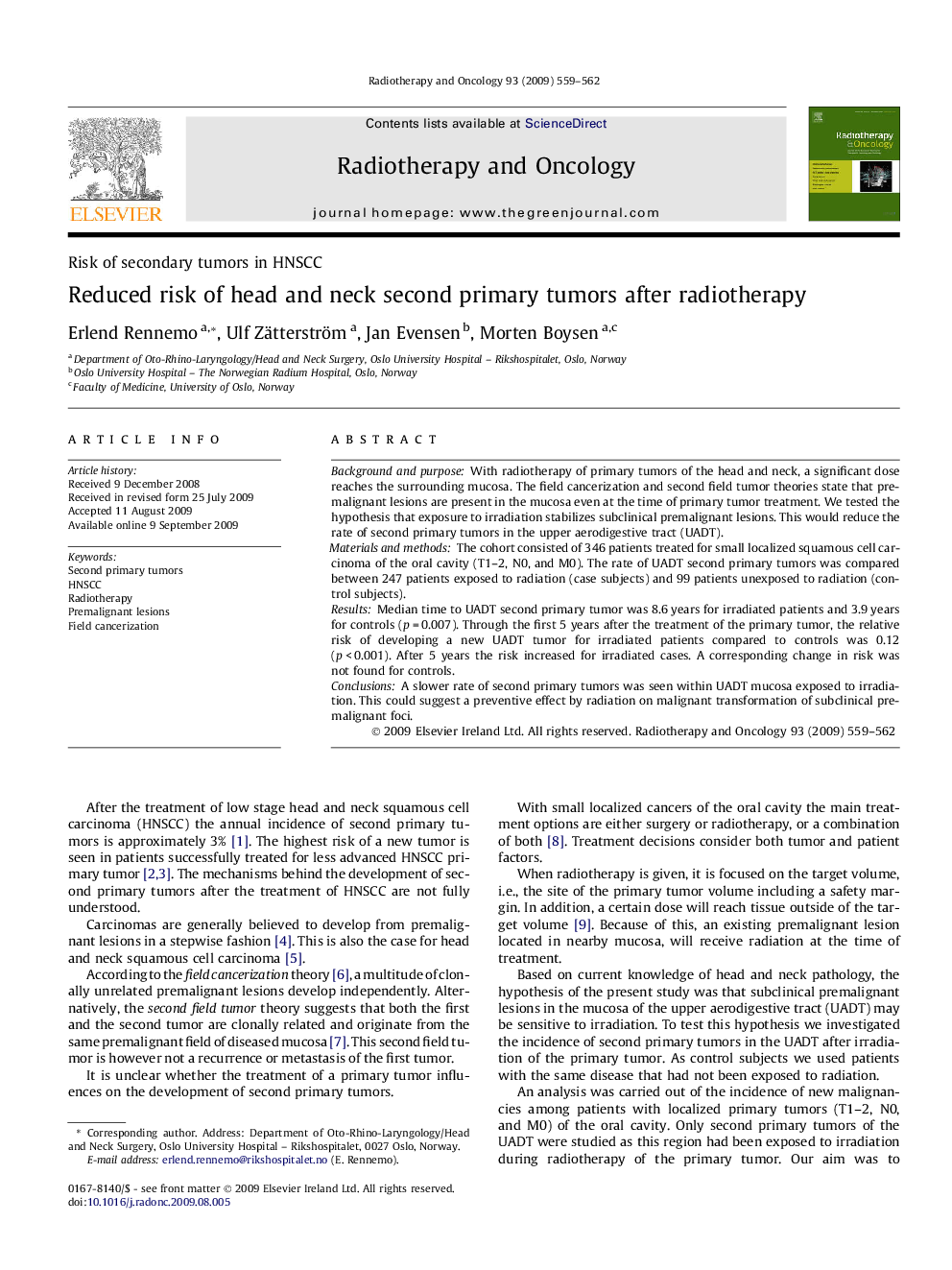| Article ID | Journal | Published Year | Pages | File Type |
|---|---|---|---|---|
| 2159749 | Radiotherapy and Oncology | 2009 | 4 Pages |
Background and purposeWith radiotherapy of primary tumors of the head and neck, a significant dose reaches the surrounding mucosa. The field cancerization and second field tumor theories state that premalignant lesions are present in the mucosa even at the time of primary tumor treatment. We tested the hypothesis that exposure to irradiation stabilizes subclinical premalignant lesions. This would reduce the rate of second primary tumors in the upper aerodigestive tract (UADT).Materials and methodsThe cohort consisted of 346 patients treated for small localized squamous cell carcinoma of the oral cavity (T1–2, N0, and M0). The rate of UADT second primary tumors was compared between 247 patients exposed to radiation (case subjects) and 99 patients unexposed to radiation (control subjects).ResultsMedian time to UADT second primary tumor was 8.6 years for irradiated patients and 3.9 years for controls (p = 0.007). Through the first 5 years after the treatment of the primary tumor, the relative risk of developing a new UADT tumor for irradiated patients compared to controls was 0.12 (p < 0.001). After 5 years the risk increased for irradiated cases. A corresponding change in risk was not found for controls.ConclusionsA slower rate of second primary tumors was seen within UADT mucosa exposed to irradiation. This could suggest a preventive effect by radiation on malignant transformation of subclinical premalignant foci.
